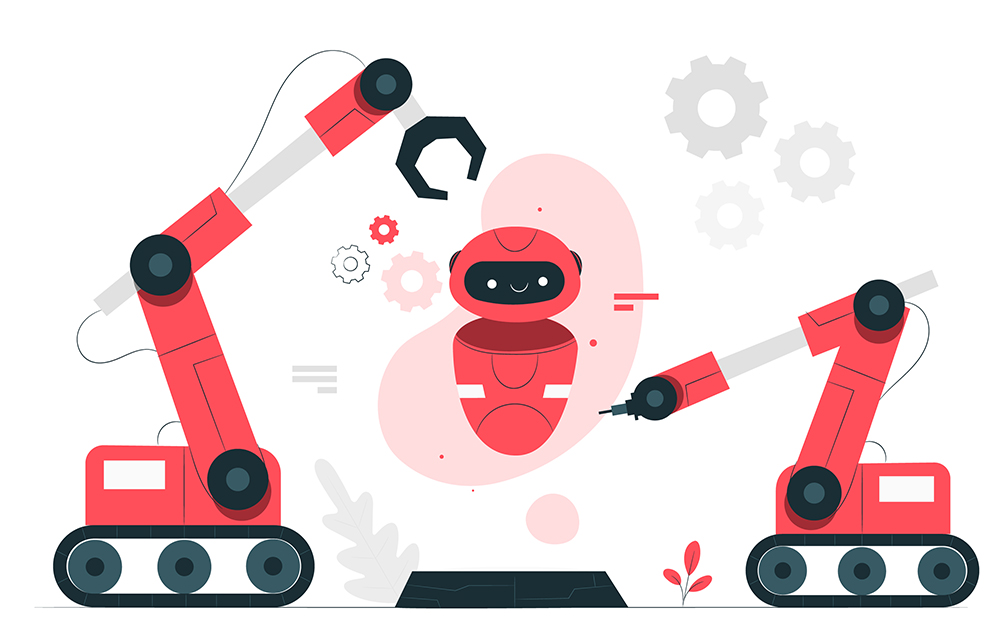It's important to acknowledge the vital role played by administrative professionals in the success of any busi...
Brickwork Blogs


Role of Human Assistants and Automation in Office Administration
As automation continues to reshape the landscape of office administration, there's a growing conversation around the role of human assistants in this era of technological evolution. While automation brings efficiency and speed to routine tasks, the nuanced skills and adaptability of human assistants remain indispensable.
In this blog, we'll explore the symbiotic relationship between automation and human assistants, highlighting how this dynamic duo contributes to a seamlessly functioning modern office environment.
The Rise of Automation in Office Administration:
Automation, powered by artificial intelligence and machine learning, has revolutionized how businesses handle administrative tasks. From data entry and document management to scheduling and communication, automation tools promise increased efficiency, reduced errors, and cost savings. However, the integration of automation doesn't imply a diminished role for human assistants; rather, it signals a shift in their responsibilities and an opportunity for skill enhancement.
The Strengths of Automation:
Efficiency and Speed:
Automation excels in handling repetitive, time-consuming tasks with unparalleled speed and accuracy. Routine activities such as data processing, migrating and extracting data, database integration, running analysis reports in MS Excel can be executed swiftly, freeing up time for human assistants to focus on more complex and strategic aspects of their roles.
Data Analysis and Reporting:
Automated tools can process large datasets and generate detailed reports, providing valuable insights for decision-making.
Automated data entry processes can reduce errors and improve data accuracy.
Document Management can implement systems for automated document sorting, indexing, and retrieval, making it easier for employees to access necessary information.
This allows human assistants to leverage the analyzed data for strategic planning, rather than spending excessive time on manual data compilation and analysis.
Task Automation:
Mundane, rule-based tasks that consume a significant portion of a human assistant's time can be automated. This includes using tools such as MS Find Time to check calendars to understand the availability of individuals.
OneNote is another tool that makes the process of sharing and editing meeting notes with attendees simple and quick. Using such tools allows human assistants to engage in creative tasks and engage in high order thinking.
The Indispensable Role of Human Assistants:
Emotional Intelligence and Communication:
One area where human assistants shine is in their emotional intelligence and communication skills. While automation tools can handle basic communication, human assistants bring a personal touch to interactions. They understand the nuances of language, emotion, and context, fostering positive relationships both internally and externally.
Critical Thinking and Problem-Solving:
When faced with complex challenges or ambiguous situations, the ability to think critically and problem-solve is a uniquely human trait. Human assistants can navigate unstructured scenarios, adapt to unforeseen circumstances, and find creative solutions that may elude automated systems.
Adaptability and Learning:
Human assistants possess the capacity to adapt to evolving tasks and environments. Unlike automation, they can learn on the job, acquiring new skills and knowledge to address the changing needs of the organization. This adaptability is a crucial asset in a dynamic business landscape.
Relationship Building:
Building and nurturing relationships, whether with clients, colleagues, or partners, is a fundamental aspect of business. Human assistants excel in understanding the nuances of interpersonal dynamics, fostering collaboration, and maintaining the human touch that is often essential in professional relationships.
Strategic Decision-Making:
While automation tools can provide data-driven insights, the interpretation of this data and the formulation of strategic decisions require human judgment. Human assistants contribute to the decision-making process by synthesizing information, considering contextual factors, and aligning decisions with broader organizational goals.
Achieving Synergy: The Future of Office Administration
The most effective approach to office administration in the age of automation involves the harmonious integration of technology and human capabilities. Rather than viewing automation as a threat, organizations should leverage it as a tool to enhance the effectiveness of human assistants and elevate the overall efficiency of office operations.
Skill Enhancement:
Automation allows human assistants to focus on honing skills that are uniquely human skills that can't be replicated by machines. This might include mastering new technologies, developing leadership qualities, or deepening expertise in specific domains critical to the organization.
Task Delegation and Time Management:
By delegating routine, time-consuming tasks to automation tools, human assistants can allocate their time strategically. This enables them to concentrate on high-priority activities that demand creativity, critical thinking, and human-centric skills.
Collaboration and Training:
Human assistants can collaborate with automation tools, providing insights into areas where automation can be optimized and ensuring a seamless integration of new technologies. Additionally, ongoing training programs can keep human assistants abreast of the latest advancements, enabling them to effectively navigate a tech-enhanced work environment.
User-Friendly Automation:
As automation tools evolve, there is a growing emphasis on user-friendliness. Human assistants can actively participate in the design and customization of automation solutions to ensure that these tools align with the unique needs and workflows of the organization.
In the modern office landscape, the synergy between automation and human assistants is the key to unlocking unparalleled efficiency and productivity. Automation tackles the repetitive and time-consuming, while human assistants bring emotional intelligence, critical thinking, and adaptability to the table. Organizations that recognize and harness the strengths of both elements will not only streamline their administrative processes but also empower their human workforce to thrive in a technology-enhanced future. As we navigate this transformative era, the collaboration between automation and human assistants emerges as a powerful force that propels office administration to new heights of success.
We have highlighted the transformative role of remote assistance service providers and automation using advanced tools on modern office administration.
The synergy between automation and human assistants, have the potential to unlock efficiency, streamline organizational workflows, and optimize business processes to achieve higher business objectives.

How can Brickwork help you?
Brickwork offers remote assistance for SMBs and large enterprises.
By combining automation with human assistance and using tools like MS Find Time and OneNote, virtual assistants assistants at Brickwork create a synergy that maximizes efficiency, minimizes errors, and allows businesses to focus on their core activities.
To understand and learn more about our services, reach out to us today!


